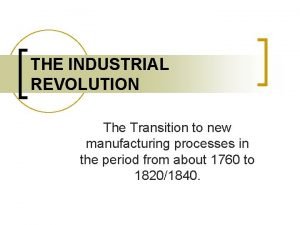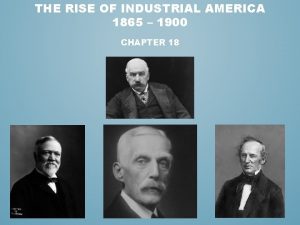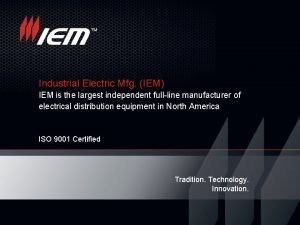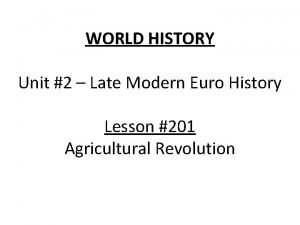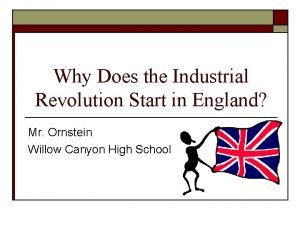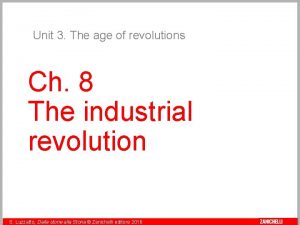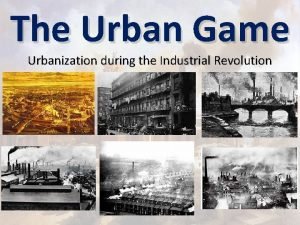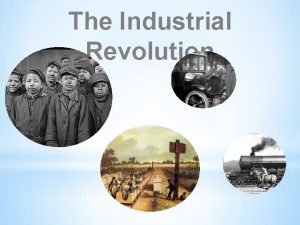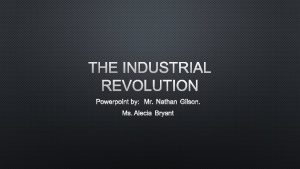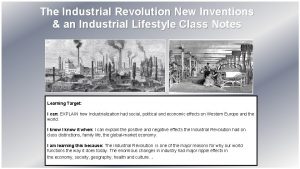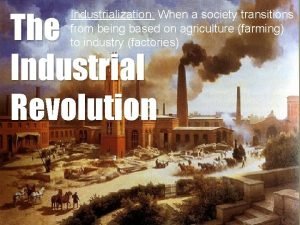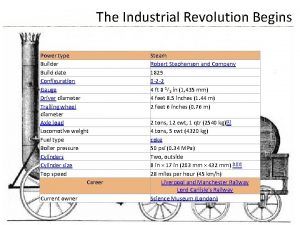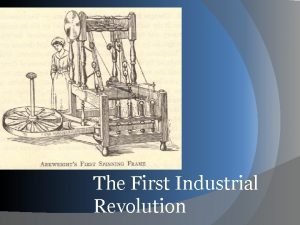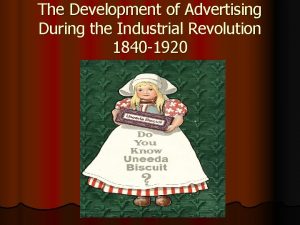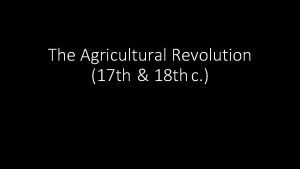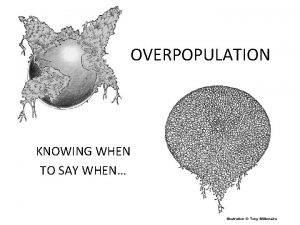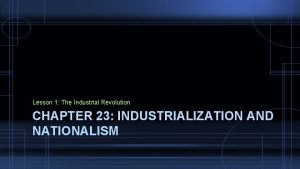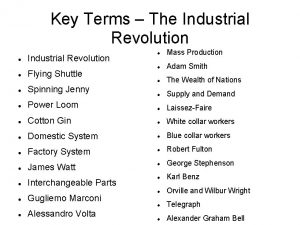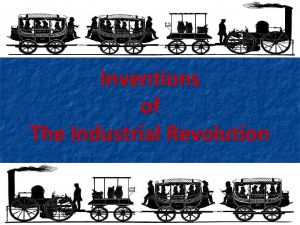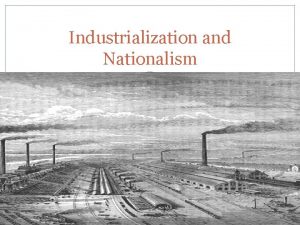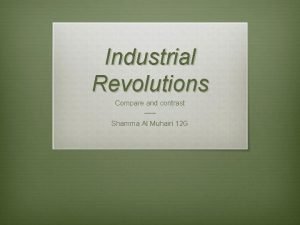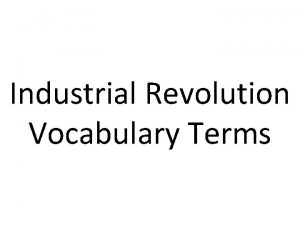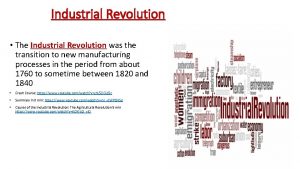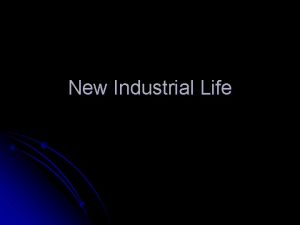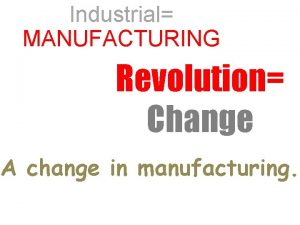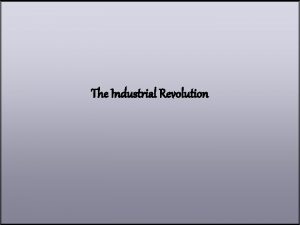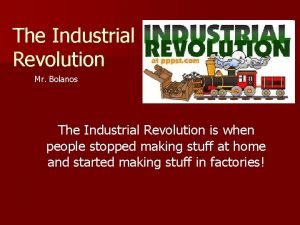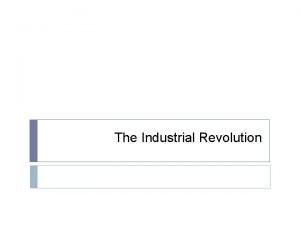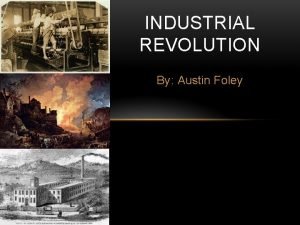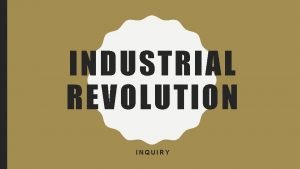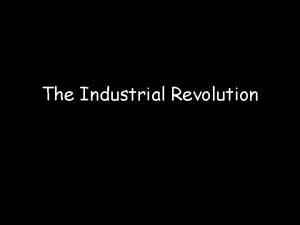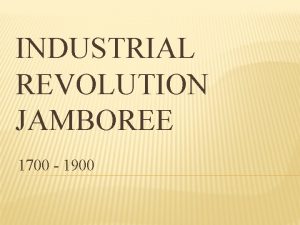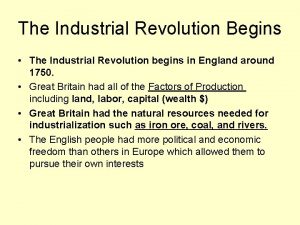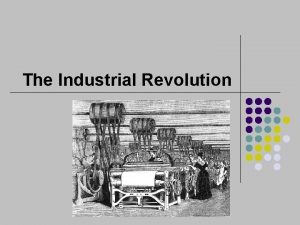THE INDUSTRIAL REVOLUTION The Transition to new manufacturing



































- Slides: 35

THE INDUSTRIAL REVOLUTION The Transition to new manufacturing processes in the period from about 1760 to 1820/1840.

Pre- Industrial World vs. Industrial World

Pre-Industrial World (Before 1700) n Most goods were made at home. n This meant there was a demand for skilled workers. n High quality of goods.

n Creating goods took a longer period of time. n There were less goods in circulation. n The price of goods were high.

Industrial World n Most goods were made in a factory. n This meant there was a demand for unskilled workers.

n Low quality of goods. n Creating goods took a short period of time. n There were more goods in circulation. n The price of goods were low.

The Industrial Revolution n Why was there an Industrial Revolution in England?

CAN YOU DEFINE THE TERM INDUSTRIAL REVOLTUION? n PICTURE # 1: Taken before the Industrial Revolution n PICTURE # 2: Taken after the Industrial Revolution

The Industrial Revolution n The time period in the 1750’s, when people switched from making goods in the home or on the farm n To mass producing goods in factories located in cities. How close were you to this definition ? ? ?

Let us understand the “Causes of Industrialization” n #1: Agricultural Revolution n #2: Population Explosion n #3: Energy Revolution Which causes are seen in this picture?

The Agricultural Revolution n Small farms were enclosed with fences to create large, profitable farms. New farming methods and machinery increased agricultural production (More Food & Seed Drill). Better food production

Population Explosion n People eat better n Women give birth to healthier babies n Better medical care slows the death rate n All these people needed jobs & moved to cities n More demand for goods

Energy Revolution n n New machines allowed mass production of goods (many at a time). New inventions improved products and created new products. n n n Water wheels power machines Coal used to fuel steam engines Faster production of goods

Why Great Britain? n Why did the Industrial Revolution begin in England?

Why did INDUSTRIALIZATION begin in England? n ENGLAND HAD THE FOLLOWING: ¡ ¡ ¡ Colonial Empire: Colonies supplied Britain with raw materials & served as markets for finished goods (mercantilism). Capital: wealthy merchants had money to invest. Geography: n n n Island – good access for trade Irregular coastlines – great for harbor/ports Mild temperatures (trade all year)

Why did INDUSTRIALIZATION begin in England? n ENGLAND HAD THE FOLLOWING: ¡ ¡ Large Labor Supply: Human Resources because of population explosion, machines replaced farmers Natural Resources: Coal & iron ore (abundant supply) New Technology: Textiles, Transportation, & Communication Stable government & Economy

RANK IN ORDER OF IMPORTANCE n n n n 1: 2: 3: 4: 5: 6: 7: ¡ ¡ BE SURE TO HAVE A REASON FOR YOUR CHOICE

The Basics of an Industrialized Society n Shift from rural (farming) economy to urban (city), machine based manufacturing n Wage Employment- Instead of working on a farm for a share of the crops and a place to live, people earn wages in factories n Movement of people from farms to cities n High social mobility- easier to raise or lower social class depending on ability and work performance

The Industrial Revolution n How did the Industrial Revolution Affect Society?

How did the Industrial Revolution Change Society? n PICTURE # 1 : Taken before the industrial revolution n Picture # 2 : Taken after the industrial revolution

These are some Social Effects of Industrial Revolution n Urbanization- the growth of large cities n Rise of a working class n New roles for children n New roles for women

Urbanization By 1850, more people in Great Britain lived in cities than in the countryside. n As fewer workers were needed on the farm, workers moved to the cities to find jobs in factories. n Overcrowding and pollution increased.

Rise of a Working Class n In the cities, workers often found themselves working long hours for low pay and in dangerous factories. Many factory owners became rich while workers did not. n There was a wide difference in wealth between the factory owners POSITIVE OR NEGATIVE ? (haves) and the workers (the have nots)

New Roles for Children n While children used to work on the farm, many now worked in dangerous conditions in factories. ¡ They were prized by factory owners because they could fit into tight spots and would not complain.

New Roles for Women n While women did chores on the farm, they were also able to take care of children during the day. During the Industrial Revolution, women would either work in the dangerous factories or stay home and take care of the children, thus becoming very dependent on men.

Distribution of Factory workers (by age and gender), 1833 Wage of Factory workers, 1833 “Report from Dr. James Mitchell to the Central Board of Commissioners, respecting the Returns made from the Factories, and the Results obtained from them. ” British Parliamentary Papers, 1834 (167) XIX.

The Industrial Revolution n How did the Industrial Revolution lead to democratic reforms in England?

How would you fix or change these social effects of the Industrial Revolution? Be specific! n n 1. Urbanization- the growth of large cities with overpopulation and pollution 2. Rise of a relatively poor working class and a rich capitalist class 3. New roles for children- children worked in dangerous factories 4. New roles for women- women had dual responsibility in the home and in factories

How did the English government address the social problems created by the Industrial Revolution? n The following slides show the reforms made by the English government to address the problems of the Industrial Revolution

Reforms to the Problems of Cities n n n Paved streets, sewers, electric street lights Police forces and better fire departments Cleaner water supplies Effective or Not?

Reforms to the Problems of the Working Class n Workers formed unions to bargain on their behalf with employers Rising wages for most workers and a minimum wage was established Most men received the right to vote Effective or Not?

Reforms to the Problems of Children n Elementary Education Act of 1880 provided free public school education for all children Laws were passed limiting the working day of children Effective or Not?

Reforms to the Problems of Women n Laws were passed banning women from working in coal mines Women began to join skilled professions such as doctors, lawyers, researchers and inventors Women joined groups demanding better rights and the right the vote Effective or Not?

Evaluate the following statement… n “Problems exist in the world today that are very similar to the problems that first existed over 200 years ago during England’s industrial revolution. The world has not learned the lessons of England’s industrial revolution. ”

What is happening in the world today? n #1 Do the social problems that occurred during the Industrial revolution exist around the world today? n #2 Have working conditions improved so much that these social problems have disappeared from the world?
 The transition to new manufacturing processes
The transition to new manufacturing processes Manufacturing cost vs non manufacturing cost
Manufacturing cost vs non manufacturing cost Job order vs process costing
Job order vs process costing Cost concept and classification
Cost concept and classification Manufacturing cost vs non manufacturing cost
Manufacturing cost vs non manufacturing cost Additively
Additively Equipment name
Equipment name The rise of industrial america 1865-1900
The rise of industrial america 1865-1900 Industrial electric mfg
Industrial electric mfg Russian revolution vs french revolution
Russian revolution vs french revolution Could the french revolution have been avoided
Could the french revolution have been avoided Modern commercial agriculture
Modern commercial agriculture Enclosure movement industrial revolution
Enclosure movement industrial revolution Why did the industrial revolution start in britain
Why did the industrial revolution start in britain Zanichelli
Zanichelli The urban game
The urban game Enclosure movement industrial revolution
Enclosure movement industrial revolution When was the loom invented
When was the loom invented Industrial revolution quiz
Industrial revolution quiz Industrial revolution powerpoint
Industrial revolution powerpoint Negative effects of industrial revolution
Negative effects of industrial revolution The factory
The factory Multistory building divided into crowded apartments
Multistory building divided into crowded apartments Water frame significance
Water frame significance Industrial revolution ad
Industrial revolution ad Enclosure movement
Enclosure movement The second industrial revolution timeline
The second industrial revolution timeline Thomas malthus industrial revolution
Thomas malthus industrial revolution Lesson 1 the industrial revolution
Lesson 1 the industrial revolution Radio shuttle factories
Radio shuttle factories Who invented the phonograph in the industrial revolution
Who invented the phonograph in the industrial revolution Chapter 10 lesson 1 the industrial revolution
Chapter 10 lesson 1 the industrial revolution Shamma al muhairi
Shamma al muhairi Industrial revolution vocabulary
Industrial revolution vocabulary Entrepreneurs industrial revolution
Entrepreneurs industrial revolution Effects of industrial revolution
Effects of industrial revolution
